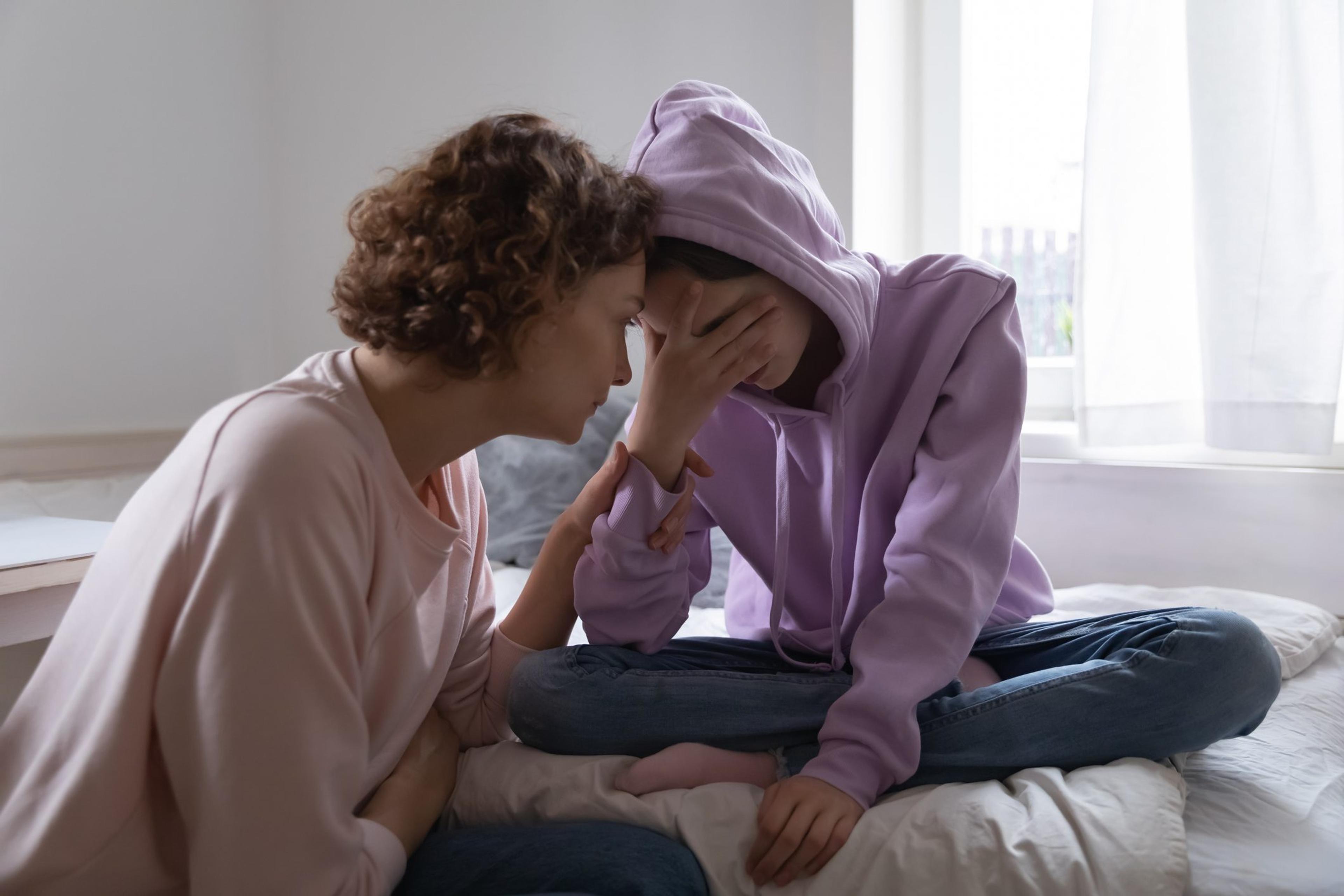Managing Anxiety Triggers in Children and Adolescents

James Grant, M.D.
| 3 min read
James D. Grant, M.D., is executive vice president an...

Anxiety levels in children and teens often rise in late summer and early fall just as they get ready to go back to school. This year, as families and schools prepare for a return after the intense disruption of the COVID pandemic, anxieties may increase even more. Some students may exhibit signs of anxiety for the first time. Changes in routine, such as going back to school, is a cause for anxiety in many children and adolescents. Anxiety is a natural, human response to a stressful situation. Essentially, it is a survival mechanism that causes the body to elicit a “fight or flight” action to protect us in a life-threatening situation, like a fire or animal attack. There are many stressful but not life-threatening situations that can trigger response; if these reactions occur repeatedly, they may result in episodic or chronic anxiety.
It’s important for parents to be aware of situations or actions that can trigger an anxiety response in their child or teen. What is stressful for one child may not be stressful for another. Being aware of individual stress triggers can help parents prevent certain situations and monitor their children for signs of increasing anxiety. Stress and anxiety might look different in children and teens than in adults. Some signs to monitor include:
- Increased crying or tantrums
- Insecurity, or not wanting to be separated from a parent or relative
- Physical complaints, like headaches or stomachaches
- Changes in toileting habits, such as bedwetting or going more often
- Changes in sleep habits
- Changes in demeanor, such as increased anger or irritability
- Changes in eating habits
Parents, families and caregivers play an important role in helping their children cope with increased stress or anxiety. Here are some ways to help:
- Remain calm and reassuring. Children tend to absorb and project their parents’ feelings and behaviors. It’s helpful when parents can remain composed and convey a sense of confidence. This helps children feel more secure.
- Talk it out. Children and teens may feel embarrassed by their anxieties. Parents can encourage their kids to talk with them about their fears and show their kids they are listening and understanding.
- Provide space and time to act out stress behavior. Sometimes, anxious kids just need to burn off nervous energy, whether it’s running, jumping, yelling, laughing, singing or something else. Allowing time to de-stress can help them calm their thoughts.
- Practice or role-play. Children can gain confidence when given the opportunity to practice ways to respond to a stressful situation. Parents can guide children through this process and encourage them to develop their own plans for handling anticipated issues.
- Do something active: Taking a break to get outside for a walk, ride a bike, go to the pool or turn on some music and dance can allow children to give their minds a break and accomplish something fun.
- Distract them: Aim for an activity that the child is familiar with and likes to do, and that they will be able to engage with for at least 90 minutes. Allowing children time to gain a fresh perspective on a difficult situation is important to help them process their emotions.
While some stress and anxiety is normal, there are times when children might need assistance from a behavioral therapist to manage their anxiety, particularly when the anxious behaviors are disruptive or harmful to the child or to others. It’s always OK to seek help. Parents can talk with their child’s doctor for recommendations on programs and anxiety therapy providers. For more behavioral health resources, visit www.bcbsm.com/mentalhealth. James D. Grant, M.D., is senior vice president and chief medical officer at Blue Cross Blue Shield of Michigan and William Beecroft, M.D., D.L.F.A.P.A., is a medical director of behavioral health at Blue Cross Blue Shield of Michigan. Photo credit: Getty Images





